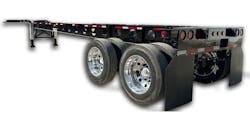The program calls for guaranteed pay increases for the next three years to help significantly elevate driver pay to levels that successfully attract new drivers required to meet the capacity and growth needs of the organization’s blue chip customer base.
“As the flagship carrier in the tank truck segment, it is important that we boldly assume the responsibility of protecting our customers from the painful impacts of the driver shortages,” says Dennis Nash, KAG chief executive officer. “A potential tsunami is building now that presents serious consequences if not addressed.”
Bruce Blaise, KAG president, says: “The perfect storm is upon us. Developing factors include the coming industry-wide driver capacity impacts of the ELD (electronic driver log) mandate, an economy near full employment, and an aging workforce. Estimates indicate that as many as 20%-25% of current drivers will be retiring over the next five years. We simply have to make the adjustments needed to attract new drivers to our company and industry.”
Nash says: “There are many elements to creating a highly attractive work experience such as new equipment, advanced technology, safety support, respect and appreciation from management, and many more. We’ve spent an enormous amount of time and energy enhancing all of these as part of our ‘Employer of Choice’ promise. But ultimately, we have to provide a compensation package that can compete effectively with other industries for what is a shrinking pool of available candidates. This move provides drivers with the certainty that they will experience an improving personal financial situation well into the future.”
KAG will be contacting its customers over the next 30-45 days to secure the additional funding needed to support the program.








